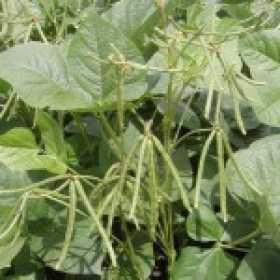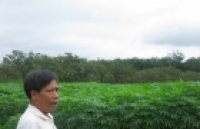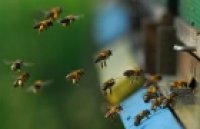| Natural diversity in daily rhythms of gene expression contributes to phenotypic variation |
|
Daily rhythms of gene expression ensure that biological processes occur at the optimal time of day. In plants, temporally regulated processes include traits of ecological and agricultural importance, and understanding how changes in daily rhythms of expression modify such traits has broad implications |
|
Amaury de Montaigu, Antonis Giakountis, Matthew Rubin, Réka Tóth, Frédéric Cremer, Vladislava Sokolova, Aimone Porri, Matthieu Reymond, Cynthia Weinig, and George Coupland Significance
Daily rhythms of gene expression ensure that biological processes occur at the optimal time of day. In plants, temporally regulated processes include traits of ecological and agricultural importance, and understanding how changes in daily rhythms of expression modify such traits has broad implications. We find that natural genetic variation can accurately modify temporal gene expression waveforms during the day by influencing light signaling pathways, rather than circadian rhythms. We further show that changes in transcriptional patterns induced by natural alleles are sufficient to affect downstream molecular outputs and cause phenotypic diversity. Such natural alleles could provide an advantage by adjusting the activity of temporally regulated processes while avoiding the pleiotropic effects associated with severe disruptions of the circadian system. Abstract
Daily rhythms of gene expression provide a benefit to most organisms by ensuring that biological processes are activated at the optimal time of day. Although temporal patterns of expression control plant traits of agricultural importance, how natural genetic variation modifies these patterns during the day and how precisely these patterns influence phenotypes is poorly understood. The circadian clock regulates the timing of gene expression, and natural variation in circadian rhythms has been described, but circadian rhythms are measured in artificial continuous conditions that do not reflect the complexity of biologically relevant day/night cycles. By studying transcriptional rhythms of the evening-expressed gene GIGANTEA (GI) at high temporal resolution and during day/night cycles, we show that natural variation in the timing of GI expression occurs mostly under long days in 77 Arabidopsis accessions. This variation is explained by natural alleles that alter light sensitivity of GI, specifically in the evening, and that act at least partly independent of circadian rhythms. Natural alleles induce precise changes in the temporal waveform of GI expression, and these changes have detectable effects on PHYTOCHROME INTERACTING FACTOR 4 expression and growth. Our findings provide a paradigm for how natural alleles act within day/night cycles to precisely modify temporal gene expression waveforms and cause phenotypic diversity. Such alleles could confer an advantage by adjusting the activity of temporally regulated processes without severely disrupting the circadian system.
See: http://www.pnas.org/content/112/3/905.abstract.html?etoc PNAS January 20, 2015 vol. 112 no. 3 905-910
Fig. 1. Natural variation and genetic basis of the timing of GI expression during day/night cycles. (A) Box plots representing the variation and average (horizontal bars) of GI peak time of expression in 77 accessions. (B) Correlations between GI peak time measured in LDs of 16 h, with GI peak time measured in other photoperiods, and between GI peak time and period length (DD) measured after entrainment in the same photoperiod. The Pearson correlation coefficient (R) indicates the strength of the correlations, with 1 and −1 indicating perfect positive and negative correlations, respectively. **P ≤ 0.01. (C) GI peak time in Col-0 and Lip-0 accessions (mean ± SD of two biological replicates). (D) QTL mapping in Col-0 × Lip-0 GI::LUC F2 progenies. QTLs were detected for GI peak time in two consecutive LDs of 16 h (LD1 and LD2), for GI peak time in the first day in darkness after the shift to constant conditions (dark), and for period length in constant darkness (DD). Dashed lines represent LOD thresholds. (E) Allelic effect of the TOG1 QTL in F2, F3, F4, and F5 progenies that were Col-0 or Lip-0 homozygous at TOG1. Seedlings were grown in LDs of 16 h. The populations are described in SI Appendix, Fig. S4A (mean ± SEM; n is indicated inside the bars; *P ≤ 0.05, **P ≤ 0.01 with a two-tailed Student t test). (F) Location of the TOG QTLs. Upward and downward arrows indicate that the Lip-0 allele advances or delays GI peak time, respectively. |
|
|
|
[ Tin tức liên quan ]___________________________________________________
|


 Curently online :
Curently online :
 Total visitors :
Total visitors :
(20).png)


